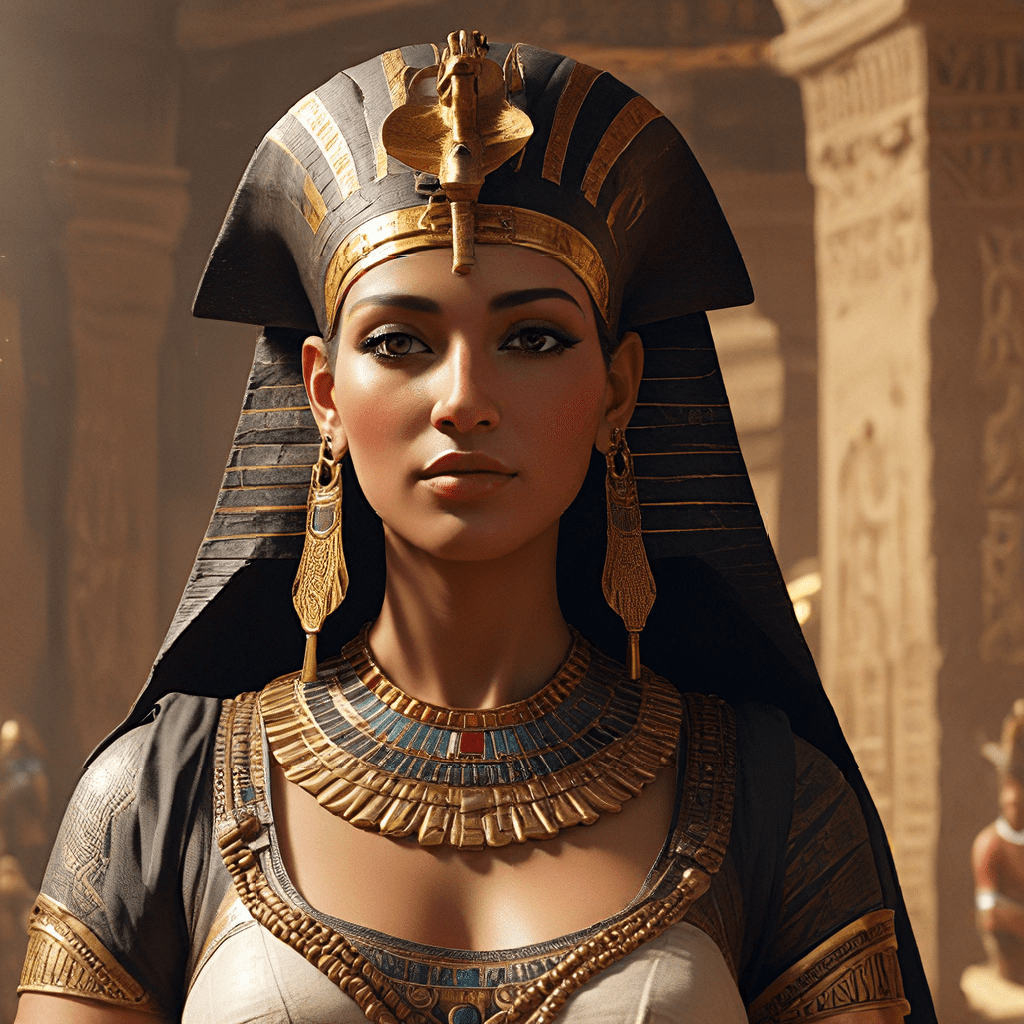The Pharaohs’ Wives and Consorts: Unveiling the Role of Women in Ancient Egypt
Step into the captivating world of ancient Egypt, where pharaohs ruled with divine authority and women played a significant role, not just as wives but as powerful figures wielding influence and shaping the destiny of the empire. Often shrouded in mystery, the lives of these royal women offer a glimpse into the complex dynamics of ancient Egyptian society.
1. Beyond the Veil: Unveiling the Power of Royal Women
Contrary to popular belief, ancient Egyptian women enjoyed a level of power and influence that was far more significant than many cultures of the time. Royal women weren’t simply confined to the home; their voices echoed in political decisions, religious ceremonies, and artistic creations. They held titles like “Great Royal Wife,” “King’s Sister-Wife,” and “God’s Wife,” signifying their unique roles and responsibilities.
2. The Great Royal Wife: Her Power and Influence
The Great Royal Wife, often the pharaoh’s primary wife, was a figure of immense power. She was considered the pharaoh’s equal and played a vital part in his reign. She shared his power, often participating in important ceremonies, including coronations and religious festivals. She also held administrative positions, managing estates and overseeing projects.
Perhaps the most famous Great Royal Wife is Nefertiti, known for her beauty and political acumen. She ruled alongside her husband, Akhenaten, and played a crucial role in the religious reforms of his reign. Her power and influence are evident in the many monuments and artifacts that depict her alongside the pharaoh.
3. The King’s Sister-Wife: A Dynasty-Preserving Role
The role of the King’s Sister-Wife was often a strategic move to solidify the pharaoh’s power within the dynasty. By marrying his sister, the pharaoh ensured the lineage remained pure and protected against potential threats. This practice, though unusual by modern standards, was a common practice among ancient Egyptian rulers.
These sister-wives were often active in royal affairs, acting as advisors and playing significant roles in the upbringing of future pharaohs. Their influence extended over the court and into the religious and political spheres.
4. The Royal Harem: Myth vs. Reality
The image of a pharaoh surrounded by scores of wives in a lavish harem is a popular image in modern media. However, the reality of the ancient Egyptian royal harem was far more nuanced. While pharaohs did have multiple wives and consorts, the harem was not solely a place of pleasure.
It was a place of political strategy and religious observation. Concubines, often chosen from noble families, played a crucial role in diplomacy, and sometimes served as religious mediators or advisors. The harem was, therefore, a complex institution that reflected the intricate dynamics of ancient Egyptian society.
5. The Divine Feminine: Queens as Goddesses
In ancient Egyptian religion, the divine feminine was a powerful force. Queens were seen as embodiments of goddesses like Isis, Hathor, and Bastet, reflecting the reverence for the female divine. This connection to the divine strengthened their authority and influence. As goddesses, queens were believed to possess special powers and were often involved in religious ceremonies, including temple building and rituals.
6. Building Power: Queens as Architects and Patronesses of the Arts
Beyond their political roles, ancient Egyptian queens were patrons of the arts and architects. They commissioned magnificent temples, pyramids, and sculptures, leaving behind a legacy of artistic brilliance. Their patronage fueled the development of Egyptian art, architecture, and literature. Queens, like Hatshepsut, are remembered for their magnificent monuments and their contributions to the cultural landscape of ancient Egypt.
7. The Legacy of Royal Women: Their Impact on Ancient Egypt
The influence of royal women on ancient Egyptian civilization is undeniable. They shaped the course of history, influenced religious practices, patronized the arts, and left an indelible mark on the cultural landscape. Their stories, often buried beneath the sands of time, offer a powerful testament to the power and influence of women in one of history’s most fascinating civilizations.
8. The Roles and Responsibilities of Consorts and Lesser Wives
While Great Royal Wives and King’s Sister-wives held prominent positions, other wives and consorts also played important roles. Lesser wives often served as companions and advisors to the pharaoh, and some even held specific administrative or religious responsibilities. Their duties included managing households, overseeing estates, and participating in religious rituals. While their influence might not have been as vast as that of the Great Royal Wife, they contributed significantly to the stability and well-being of the royal court.
9. Royal Women and Foreign Affairs: Diplomacy and Cultural Exchange
Royal women played a significant role in diplomacy and cultural exchange. They welcomed foreign dignitaries, negotiated treaties, and fostered alliances through marriages. Some queens even travelled abroad to represent their pharaohs, showcasing their political acumen and diplomatic skills. These interactions helped to shape the cultural landscape of Ancient Egypt and spread Egyptian influence across the ancient world.
10. The Evolution of the Role of Royal Women Throughout Egyptian History
The role of royal women in Ancient Egypt evolved over time, reflecting the changing dynamics of power and society. In the early dynasties, queens held a more prominent position, often wielding significant power and even co-ruling with their husbands. However, in later dynasties, their power became more restricted, with the pharaoh holding supreme authority. Despite these shifts, royal women continued to play important roles in the political, religious, and cultural life of ancient Egypt.
The lives of the pharaohs’ wives and consorts offer a fascinating glimpse into the complexity and power of the female experience in ancient Egypt. They were more than just wives; they were influential figures who wielded power, shaped the destiny of empires, and left behind an enduring legacy that continues to captivate us today.




